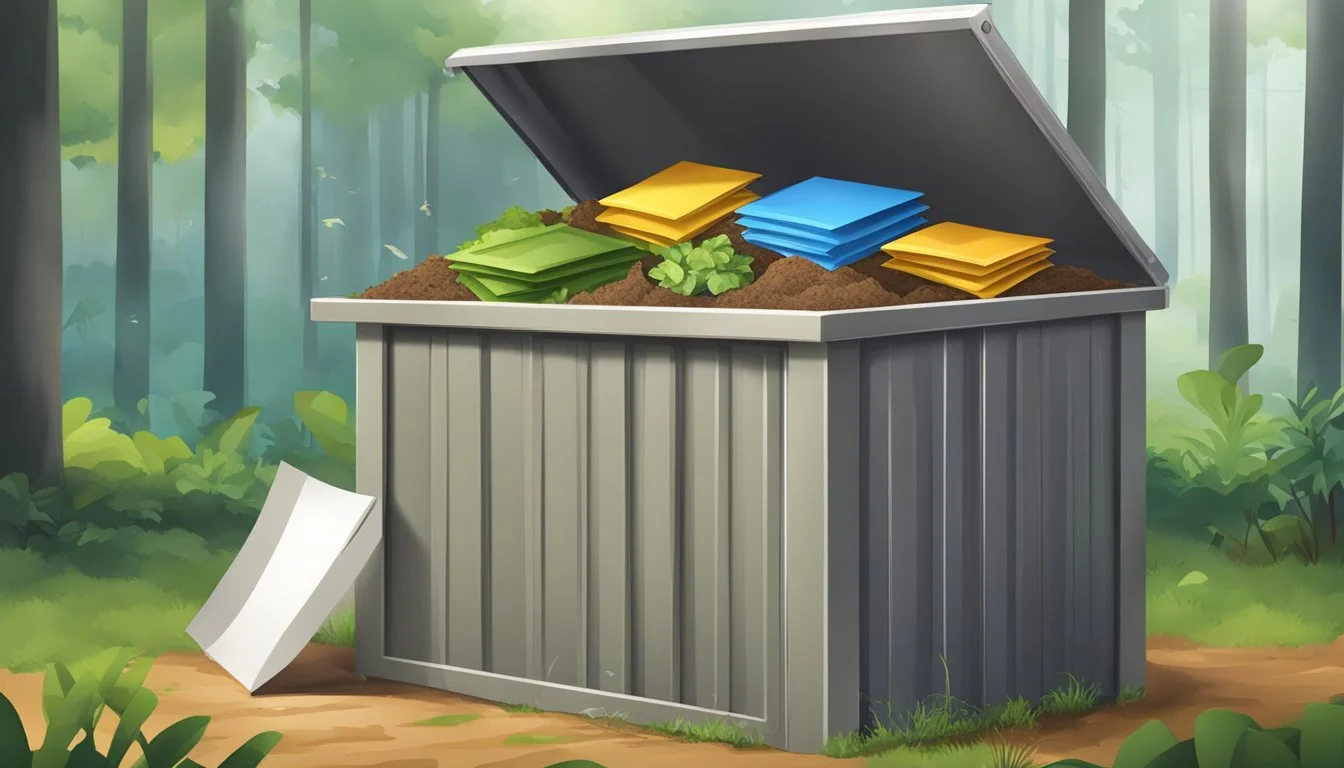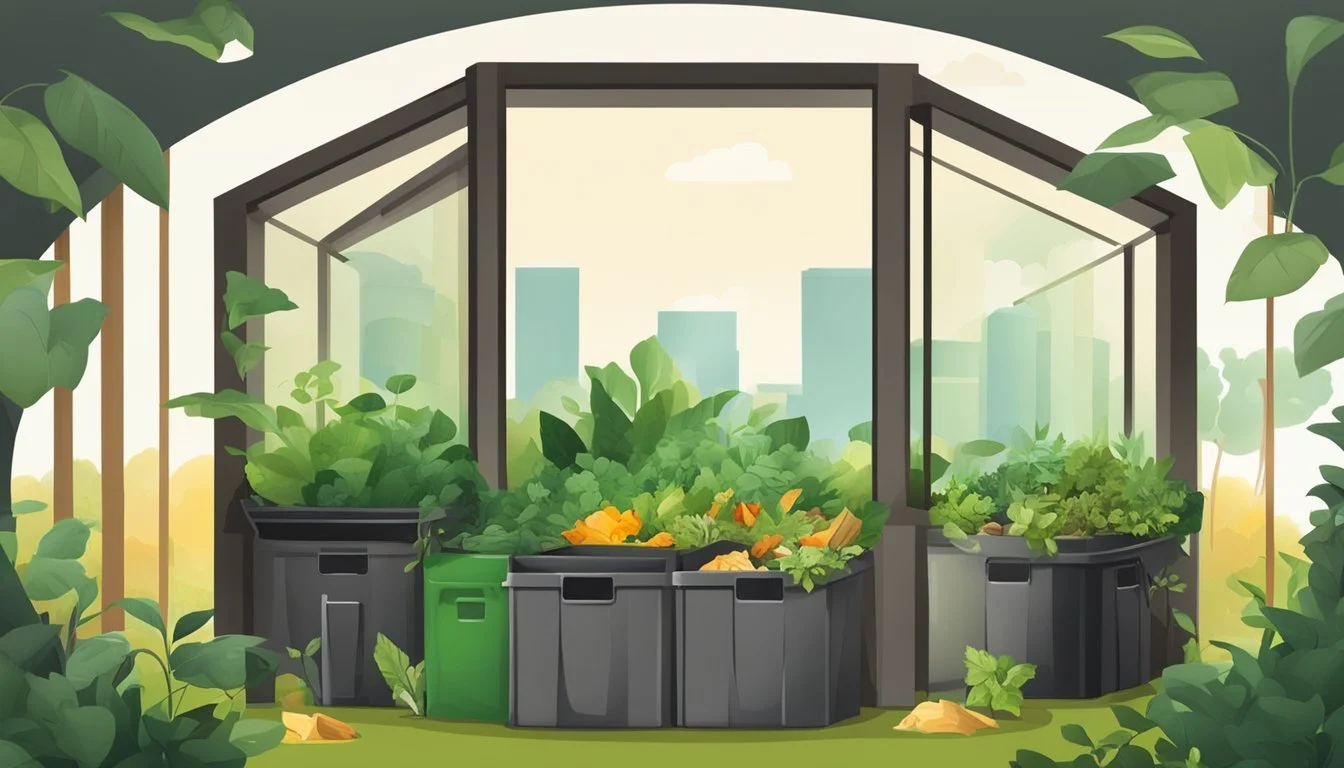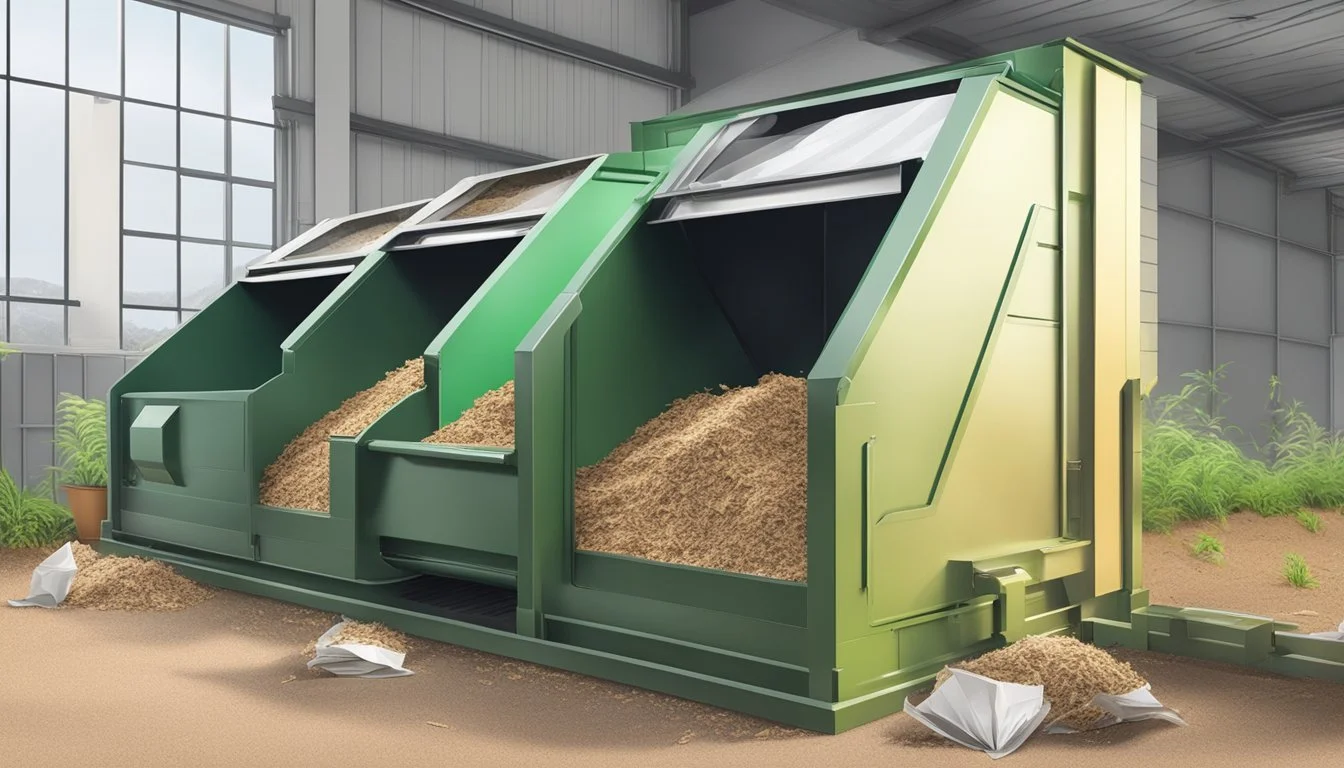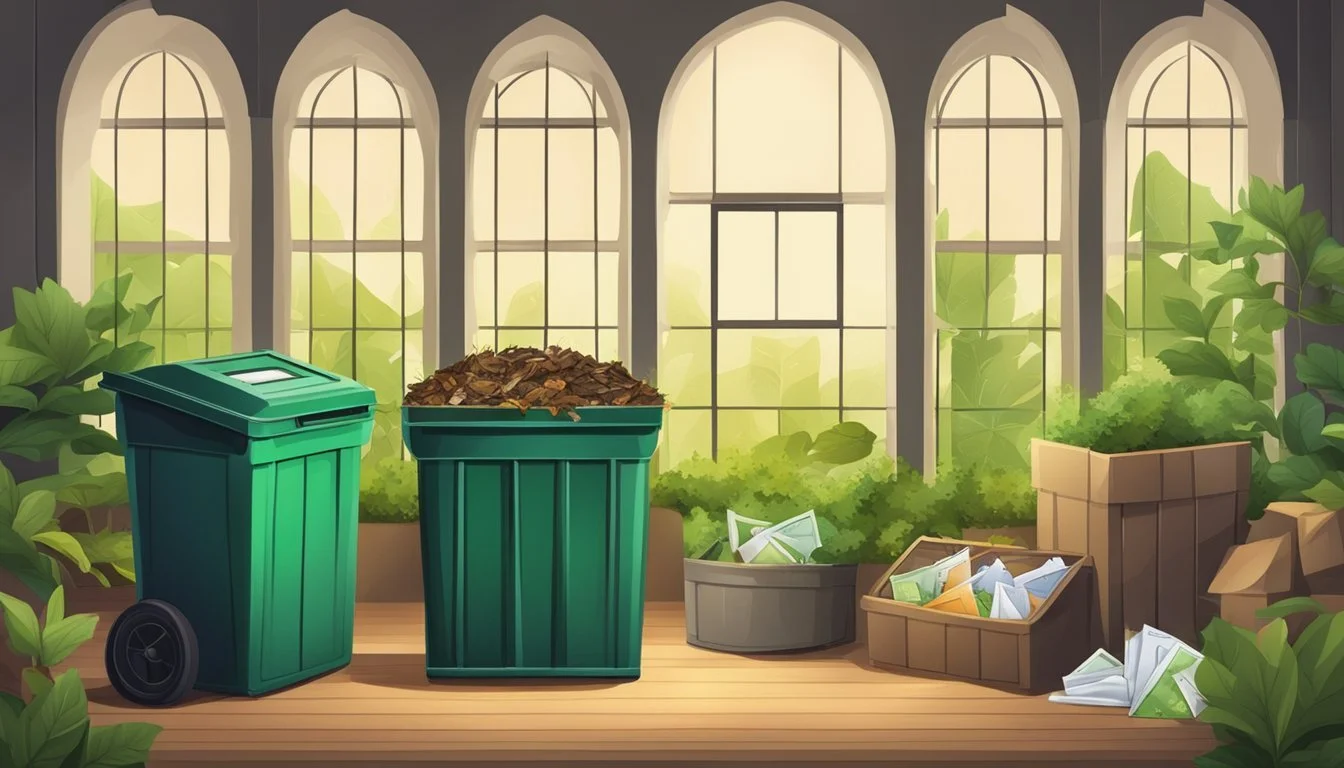Can You Compost Envelopes with Windows?
Unveiling the Truth about Composting Practices
Envelopes are a common item in both household and office waste streams, and with a growing interest in sustainability, many people wonder whether they can be composted. Composting is an environmentally friendly way to dispose of organic waste and create nutrient-rich soil for gardening. While most paper products are excellent for compost, there is uncertainty about envelopes, especially those with plastic windows designed to display the recipient's address. These windows pose a challenge as they are often made from plastics which do not decompose readily in a compost heap.
The environmental impact of an item is not just in its use but also in its disposal. Traditional composting accepts a range of biodegradable materials, but the inclusion of non-organic components can hinder the process. Envelopes with windows fall into a gray area due to the plastic component of the window. While the paper part of the envelope can break down and contribute positively to compost, the plastic windows cannot. They neither decompose nor provide any nutritional benefit to the resulting compost and can instead contaminate the soil with microplastics.
When considering the composting of windowed envelopes, the ideal approach to support sustainability is to separate the components that are not compost-friendly. Removing the plastic windows before adding envelopes to compost is a simple yet effective way to minimize environmental impact. This allows the paper to be recycled naturally in a compost pile, while the plastic windows can be disposed of through other appropriate recycling channels, ensuring that the cycle of use to disposal is as eco-friendly as possible.
Understanding Composting
To grasp composting, one must recognize its principles, the nuances of composting envelopes with windows, and the environmental impacts of this practice.
Basics of Composting
Composting is a natural process where organic matter decomposes to create nutrient-rich soil. A compost bin serves as the site for this biological activity, where microorganisms break down biodegradable material such as food scraps, leaves, and uncoated paper products. The result is a soil amendment rich in nutrients, beneficial for gardens and the environment.
Essential elements for composting:
Greens (Nitrogen-rich materials): food scraps, grass clippings.
Browns (Carbon-rich materials): dry leaves, office paper, straw.
Water: provides moisture necessary for decomposition.
Air: oxygenates the pile, enabling microorganism activity.
Composting Envelopes
Envelopes are typically made of paper, a compostable material. Plain unbleached paper envelopes without windows can be directly composted. However, envelopes with plastic windows require the user to remove the window first due to its non-biodegradable nature. Adhesives on envelopes may also be a concern, as they can introduce contaminants into the compost pile.
Guidelines for composting envelopes:
Remove plastic windows and adhesive strips.
Shred to increase surface area for microorganisms.
Mix with other organic material to maintain balance.
Environmental Benefits of Composting
Composting offers numerous advantages that contribute to a sustainable future. It reduces landfill waste, which lowers greenhouse gases and the effects of global warming. The practice supports creating a closed-loop system, returning nutrients back to the soil and enhancing its quality. By diverting biodegradable material from landfills, it helps maintain the planet's ecological balance.
Positive impacts on the environment:
Reduces methane emissions from landfills.
Conserves water by improving soil structure.
Encourages the production of beneficial bacteria and fungi.
Envelope Composition
Envelopes serve varied purposes and come in different materials, some of which have significant environmental impacts, particularly when considering compostability or recyclability.
Types of Envelope Materials
Paper and Cardboard: Most envelopes are made from paper or cardboard. These materials typically include labels, adhesive strips, or glue to seal them. The majority of paper envelopes, especially those that are not lined with plastic bags or made from glossy paper, are compostable.
Plain Paper Envelopes: Compostable and recyclable; look for non-glossy surfaces without plastic.
Cardboard Envelopes: Mostly recycled; ensure they are free of non-paper materials before composting.
Plastic Envelopes: These are made from various plastics such as polyethylene (PE) or polylactic acid (PLA), a type of bioplastic. Plastic envelopes, including bubble mailers, are often not suitable for composting due to their non-biodegradable nature.
Plastic Windows and their Environmental Impact
Window Envelopes: Typically include a small plastic window made from polyethylene. While the paper part is recyclable and potentially compostable, the plastic component adds complexity.
Impact of Plastic Windows: These windows are non-biodegradable and can negatively impact the environment if not properly disposed of or if they contaminate compost with plastic remnants.
Environmental Considerations: The plastic windows should be separated from the paper before composting to minimize environmental impact. They are generally removed in recycling facilities to avoid contaminating the recycling stream.
Composting Process for Envelopes
When composting envelopes, the preparation stage is crucial, particularly regarding non-biodegradable elements like plastic windows and adhesives. This section details the correct preparation requirements for different types of envelopes to ensure successful composting.
Preparing Envelopes for Composting
Composting envelopes begins with preparation. Envelopes containing plastic windows should have these removed as they are non-biodegradable. Adhesive labels, often found on envelopes, are also not suitable for composting and need to be removed. Once plastic components and adhesives are removed, shredding the envelopes will accelerate the decomposition process by increasing surface area.
Remove: plastic windows and adhesive labels.
Shred: envelopes to facilitate faster breakdown in compost.
Compostability of Different Envelope Types
Not all envelope types compost equally. Standard paper envelopes without windows are readily compostable as they are made of natural materials. On the other hand, Tyvek envelopes, which are made from synthetic materials, and padded envelopes that contain bubble wrap, should not be composted. Envelopes from glossy magazines are also undesirable in the compost bin due to their heavy ink and paper treatments. Always remember that recyclable items should be separated from compostable waste to streamline waste management.
Standard paper envelopes: Compostable if free of plastic and adhesives.
Tyvek and padded envelopes: Not compostable, opt for recycling if possible.
Glossy magazine envelopes: Should be avoided in compost.
Careful consideration of materials ensures effective composting and supports recycling where appropriate.
Recycle vs Compost for Envelopes
Deciding whether to recycle or compost envelopes with plastic windows is contingent on several factors. The choices made significantly impact the efficiency of recycling and composting processes.
When to Recycle Envelopes
Envelopes made of paper, including office paper and regular mail, are commonly placed in the recycling bin. Recycling guidelines generally allow for these envelopes to be included in paper recycling streams. They are processed at recycling facilities where the paper fibers are separated and used to create new paper products.
Office Paper and Mail: Standard envelopes without plastic windows are widely accepted in paper recycling.
Plastic Window Envelopes: Before recycling, check with local recycling guidelines, as some facilities are equipped to handle the separation of plastic from paper.
Challenges with Recycling Plastic Windows
While recycling is a sustainable option for paper products, the plastic window poses a specific challenge in the plastic recycling stream. Recycling plastic, especially from envelopes, comes with unique difficulties:
Separation: The process of separating the plastic from the paper is not universal and depends on local recycling facility capabilities.
Recycling Plastic Guidelines: Plastic windows are typically made from low-density polyethylene (LDPE), and not all recycling programs accept this material.
Contamination: Plastic window envelopes can contaminate the paper recycling stream if not processed correctly.
To ensure proper recycling, individuals can remove the plastic windows from envelopes prior to placing them in the recycling bin, provided they fall within the accepted items of their local recycling program.
Alternatives to Disposal
Before tossing envelopes with windows into the trash, consider methods that contribute to a sustainable future and support environmentally conscious habits.
Reusing Envelopes
Service options for envelopes: To maximize reuse potential, individuals can tap into services that facilitate the exchange or donation of used envelopes. For example, local schools or offices may appreciate donations for their in-house communication needs.
Repurpose: At home, envelopes can be repurposed for grocery lists or as organizational tools for receipts, coupons, and miscellaneous small items.
Reducing Envelope Waste
Ways to reduce waste:
Opt for e-billing: Encourage service providers to send bills electronically to minimize envelope turnover.
Select sustainable options: When purchasing, choose envelopes made from recycled materials or those certified by reputable environmental assessment bodies.
Location consideration: The availability of recycling services varies by location. Residents should consult their local waste management facilities to understand the specific recycling options, ensuring a methodical approach toward reducing waste.
Additional Considerations
When considering the composting and recycling of envelopes with windows, it is important to be aware of both local regulations and the environmental impact associated with these materials.
Local Regulations and Services
Local regulations can significantly influence how windowed envelopes should be handled. Paper recycling facilities may have specific guidelines regarding envelopes with plastic windows, often referred to as address windows. For example, some facilities may require individuals to remove the plastic film before recycling, whereas others have the capability to separate the clean plastic during the recycling process. It's essential to check with local recycling services to understand their requirements.
Acceptable items for recycling often include:
Recycled paper
Clean plastic (separated from paper)
File folders
Uncoated, colored paper
Items typically not accepted:
Soiled paper (e.g., contaminated with food, dairy, or meat)
Synthetic materials
Paper attached to other materials like treated wood
Envelopes with toxic chemicals (e.g., certain inks or adhesives)
Environmental Impact of Windowed Envelopes
The environmental impact of discarding windowed envelopes in landfills is another consideration. Envelopes with plastics, if not properly disposed of, can contribute to landfill waste, taking up space and potentially hindering decomposition. On the other hand, the inclusion of the Bi-Oriented Polystyrene (BOPS) film, commonly used for window envelopes, adds complexity to the recycling process due to its composition.
Composting considerations for envelopes with window films:
Ideal compost includes a balance of nitrogen-rich material (like coffee grounds and food waste) and carbon-rich materials (like leaves and untreated paper).
Envelopes with Bi-Oriented Polystyrene film windows, often considered "synthetic materials," should be kept out of compost to avoid contamination.
Through awareness and adherence to local recycling guidelines, individuals and businesses can minimize the environmental footprint of these common office materials, ensuring they do not end up occupying precious space in landfills or release toxic substances during decomposition.







